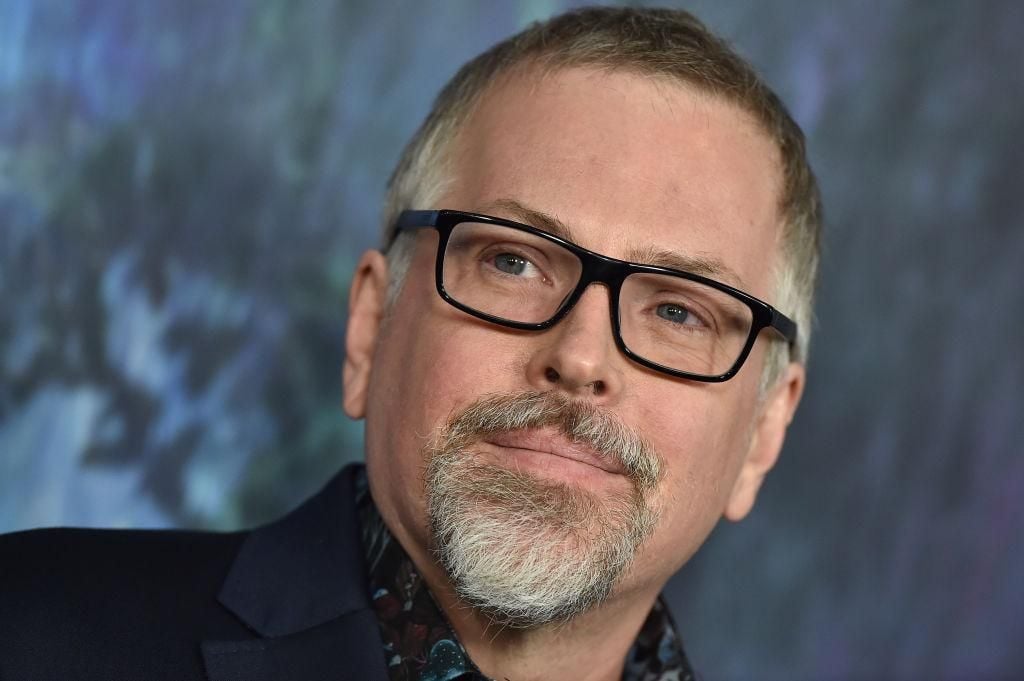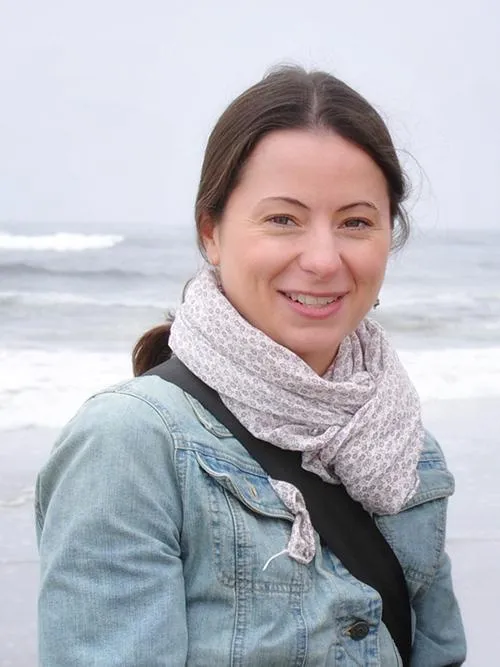Can Climate Fiction Writers Reach People in Ways That Scientists Can’t?
A new subgenre of science fiction leans on the expertise of biologists and ecologists to imagine a scientifically plausible future Earth
/https://tf-cmsv2-smithsonianmag-media.s3.amazonaws.com/filer/d4/4f/d44ff4fd-df8b-476b-be9f-8d8d528ae4b1/climate_change.jpg)
Sci-fi is full of lasers and spaceflight, holograms and super soldiers, all varying in their believability. But fiction doesn’t always mean far-fetched, and fantasy doesn’t have to be fantastical. Somewhere along these axes lies a growing set of stories that share a common theme: They’re set in a future Earth that’s scientifically plausible. In recent years, works of fiction grappling with a hefty dose of environmental degradation and climate change have hit the mainstream.
Bestsellers like Barbara Kingsolver’s Flight Behavior (2012), which tells the story of how a rural town responds to the arrival of an unexpected roost of monarch butterflies (and the scientists who come to study them), and Richard Powers’ The Overstory (2018), which weaves together narratives of nine characters whose connections with trees bring them together to protect a forest from destruction, have captured the attention of critics and readers alike. Just last month, Jeff VanderMeer released his new eco-thriller Hummingbird Salamander, a suspenseful story that hinges on species loss and ecoterrorism in a very-near future. The author, whose award-winning 2014 book Annihilation was adapted into a major motion picture, sought out Meghan Brown, a biologist at Hobart and William Smith Colleges in upstate New York, as a science advisor. Brown created the fictional—but biologically plausible—bird and amphibian species whose identities the protagonist chases throughout the story.
“It’s part of a pattern,” says Adeline Johns-Putra, a literary scholar at Xi’an Jiaotong-Liverpool University in Suzhou, China, who published the monograph Climate Change and the Contemporary Novel and has edited multiple books on climate fiction. “It’s a feedback loop, as [these books] feed into our awareness and that feeds into our demand to read these books.”

Fiction has proven to be an important medium for increasing a reader’s empathy for others, and for helping people make sense of otherwise inaccessible data and statistics. So this new sub-genre raises the question: When it comes to understanding our planet and its future, can novelists reach people in ways that scientists cannot?
VanderMeer and Brown are divided. “I’m always leery about like making claims for the influence of fiction, because I think it varies from piece to piece, how popular something gets, how it hits, all kinds of things,” says VanderMeer. “Something can seem very ecological but have very little actual effect.” On the other hand, Brown is more optimistic. "I often find that the humanities are so much better at meeting the hearts and minds of people to connect about scientific issues that make a difference in how people act toward the environment,” she says. “The sadness and the despair and the hope and the joy are kind of stripped from the way that we write as scientists.”
***
The idea that Earth’s environment might be different in the future predates understanding of modern human impacts. H.G. Wells was already dreaming up future Earth environments by the time he wrote The Time Machine in 1895. But it wasn’t until the 1960s that authors would begin addressing themes of human-caused environmental degradation in their works of fiction. Climate change wouldn’t enter the scene for another few decades.
One of the earliest mainstream works that could be explicitly labeled as “climate fiction,” or cli-fi for short, is Octavia Butler’s 1993 Parable of the Sower. The story follows a teenage girl seeking freedom from her deteriorating community in a future destabilized by climate change. Part of the reason it’s held up so well is that so many of Butler’s predictions have come true. But she wasn’t a fortune teller, she just did her homework.
“If you look in [Butler’s] archive, there are so many newspaper clippings talking about things like drought in California in the ’80s, and how Reagan-era gutting of environmental protections were going to have such a massive impact on the climate of California,” says Ted Howell, a literary scholar and lecturer at Rowan University in New Jersey who teaches a class on climate fiction. “One thing she envisioned was a lot more drought and a lot more fires. Now here we are, only three years from the future date she picks in Parable of the Sower, 2024, and we live in a world in which California has a lot more drought and a lot more fires. There’s something to be said for the idea of really trying hard to understand what the science is saying right now, and then extrapolating it into the future.”

Not all authors will go to such lengths to get the details right, and for many works of fiction, that doesn’t matter. J.R.R. Tolkien's Middle Earth gave us an encyclopedia-worth of creatures and plants, each with their own consistent ecologies that have been delighting fans since 1937. The same might be said for the Star Wars universe, with its womp rats and sarlaccs, or Harry Potter's world of fantastic beasts. Although appreciation for these fictional ecologies could, in theory, be a stepping stone for readers to pay attention to their own environments, there’s something to be said for giving readers a look at real, Earthly nature and what threatens it.
“There’s all this amazing complexity and beauty [in nature], and it is important to get it right and to show it,” says VanderMeer. “Because that’s where the beauty lives—in the details of these things.”
To create the biologically plausible, but otherwise fictional, species for Hummingbird Salamander, Brown pieced together components from real species. She wrote up detailed descriptions of the hummingbird and salamander species that resemble entries in a guidebook, summarizing their morphology, habitat, life cycle, interesting characteristics, and even threats.
“What was important to me about being accurate was that there was an intentionality about the link between the environment of the organisms that I was creating and their behavioral traits and their physical traits,” explains Brown.
For example, her hummingbird has a particular protein of hemoglobin that allows it to undertake an extraordinary migration from the Andes to the Pacific Northwest—a trait and a migration found in real hummingbirds. The salamander is a Road Newt, so named for the double yellow line running down its back—a wink to how natural selection might affect a population in a habitat fragmented by roads.
“The creatures are fictional, but their life cycles were essentially checked out and marked up and taken from other solutions that Earth has already come up with for how species exist in their environment.”
Countless authors have taken steps to ensure the accuracy of their depictions of science and nature. “There’s a whole tradition in sci-fi, sometimes we call it hard science fiction, that is extremely research-heavy,” says Howell. “[The authors] work very hard to understand the science and how it works and then depict it realistically.”
When writing his new book, VanderMeer sent relevant excerpts to experts for feedback on global wildlife trafficking and other topics.
“I feel like the writer does have a responsibility to get [the details] right in a realistic situation,” VanderMeer says. Otherwise, “it promulgates something false that could potentially be harmful.”
Even when a storyline is obviously fictional, the audience can still be impacted in real, detrimental ways. For example, researchers at the University of East Anglia in the UK surveyed 400 filmgoers before and after watching 2004’s The Day After Tomorrow, in which a new ice age essentially descends overnight. They found viewers felt slightly more concerned about climate change at first, but also confused when it came to separating science fiction from science fact—they felt it was less likely that they’d experience extreme climate change events within in their lifetime. In other words, Howell explains, portraying such a far-fetched scenario can be irresponsible because “then when people actually hear a realistic climate prediction, they may think, ‘well that’s not as bad,’ or they may think that unless something really radical is happening, then [climate change] isn’t happening or it’s fine.” Climate isn’t the only topic susceptible to confusion. Storylines that revolve around genetic engineering can be just as fraught, from Jurassic Park’s extinct species resurrections to the genetic mutations or enhancements that underlie nearly every modern superhero movie.
“It has the effect of making people not understand the science of what’s actually possible,” says Howell. “I do think authors have some responsibility to be accurate, or if they’re not, to make it clear that it’s not accurate.”
***
When it comes to impact, fiction isn’t necessarily better than nonfiction. Rachel Carson’s Silent Spring changed the way the world used the pesticide DDT after revealing its harms in 1962. Other nonfiction works have followed suit, though perhaps not quite so dramatically, like Michael Pollan’s The Omnivore’s Dilemma—researchers found undergraduate students who had read the book were more likely to believe the quality of the American food supply is declining, and to report opposition to government corn subsidies.
But fiction can do one thing that nonfiction cannot: Take place in the future.
“The thing I think we [fiction writers] can tell you about the future the most is how it’s going to viscerally surround you,” says VanderMeer. “More than the actual accuracy of the details, what I’m mostly concerned about is what is it like to live in a particular moment.”
So as much as authors might want to be sure their scientific details aren’t misleading, it’s also true that readers typically aren’t reading a novel for its facts. That doesn’t mean a story can’t be used as a tool to further people’s understanding of scientific facts.
“When we typically look at climate forecasting, there’s a lot of excellent science and data crunching behind it, but it usually gets depicted numerically,” Howell says. “We say things like, the future will be 2.4 degrees Celsius warmer, the sea level will be 3.6 meters higher … but what fiction can do is give people a sense of what it would actually look like to live in such a world that’s been made hotter, or where the weather is more extreme.”
Fiction, explains Howell, can give you the perspective of a person who is living in that radically changed world.

One such perspective that’s been cropping up more and more in fiction has been that of scientists themselves. It’s less common to see scientists as tangential, stereotyped-to-the-nines characters lurking in the background while the real heroes save the day. (Though there’s still a long way to go: A 2017 survey from the Geena Davis Institute on Gender in Media found that the representation of women as STEM professionals in films and TV has been steadily hovering around 35 percent over the past decade.) Runaway successes in environmental fiction like The Overstory and Flight Behavior have had scientists as main characters or at least critical supporting roles. Even in VanderMeer’s Southern Reach Trilogy, which contains the acclaimed Annihilation, the main character is a female biologist—a portrayal that, anecdotally, the scientific community appreciated.
“A lot of young people come up to me after book readings and say that Annihilation was the book that somehow got them interested in marine biology, or environmental science, in part because of the biologist’s extreme fascination with tidal pools and things like that,” says VanderMeer. “It’s kind of gotten me past the curmudgeonly cynicism of [thinking] maybe none of this matters.”
One study published in the journal Environmental Communication in September found that reading climate fiction significantly increased readers’ beliefs that climate change is human-caused, and that it will lead to droughts, floods, poverty and displacement of communities. But these effects were fleeting, only lasting for about a month. “It’s very unlikely that a person could read one work of fiction and then be like, ‘oh, well my understanding of climate science issues has now radically changed,’” Howell says.
Still, the stories we have at the forefront of our minds can start conversations. The Yale Program on Climate Change Communication reported in 2016 that more than half of Americans who think climate change is important “rarely” or “never” talk about it with friends or family. One in four Americans never hear global warming discussed. Reading books where the topic at least comes up can only help.

“I have friends and family members with whom it’s difficult to talk about climate change because we’re here in the United States where climate change is still a highly politicized subject,” says Amy Brady, the executive director of Orion Magazine, who writes the monthly climate fiction newsletter Burning Worlds. “But after reading a really interesting novel, I can hand that to a friend and say, ‘hey, you might like this.’ Then we can start talking about climate change via that story—it’s an entry point that doesn’t have to be politically charged.”
Climate change is such an “enormous, wicked problem,” adds Brady, that we need a lot of pathways to conversations about it. “While novels may not change the world, they at least offer one entry point into that conversation, and I think the more entry points we have into it, the better,” she says.
The more variety of cli-fi books the better, too. A reader who gravitates towards the romantic drama of Kingsolver might not be the same reader who wants the near-horror of VanderMeer.
“I think Jeff VanderMeer is a brilliant novelist, and I liked [Hummingbird Salamander] very much,” says Brady. “It’s also indicative of just how widespread ecological storytelling has become. Because it’s essentially a thriller, a mystery, and it’s not the same type of book that so many other writers are telling in this genre. It’s really cool that we have so many different types of stories that touch on ecological concerns.”
***
If you’re wondering whether reading a novel with themes of environmental degradation can be a bit depressing, you’re not alone. Stories of dystopian climate futures can indeed make readers feel kind of bad. A 2018 study found only 26 percent of cli-fi readers said a book they’d read elicited any sort of positive emotional response. Most were left feeling distressed, sad or anxious.
“I would say a lot of American climate fiction is definitely apocalyptic or dystopian in nature, but I think that’s changing,” Brady says. “As we start to see more climate fiction published in this country by authors from other parts of the world, we’ll start to see more types of narrative structures that don’t rely on this binary of hope and despair, utopian and dystopian.”
Howell craves more utopian visions of the future. “It’s helpful to have a vision of the future that is something aspirational—to have more of these hopeful stories of people living in a future but still managing to survive, still managing to thrive and do human things, even though the environment that they live in has changed radically.”
Even studies that have found climate fiction positively impacts readers have reported that an increased motivation to act doesn’t necessarily correlate with meaningful behavioral changes. People don’t know what to do. But maybe fiction could start to help that, too.
“[These books] aren’t going to save the world in any straight form or way,” says Johns-Putra. “But they’re certainly going to help us think about how the world gets saved.”
/https://tf-cmsv2-smithsonianmag-media.s3.amazonaws.com/accounts/headshot/Anna_Funk.jpg)



/https://tf-cmsv2-smithsonianmag-media.s3.amazonaws.com/accounts/headshot/Anna_Funk.jpg)